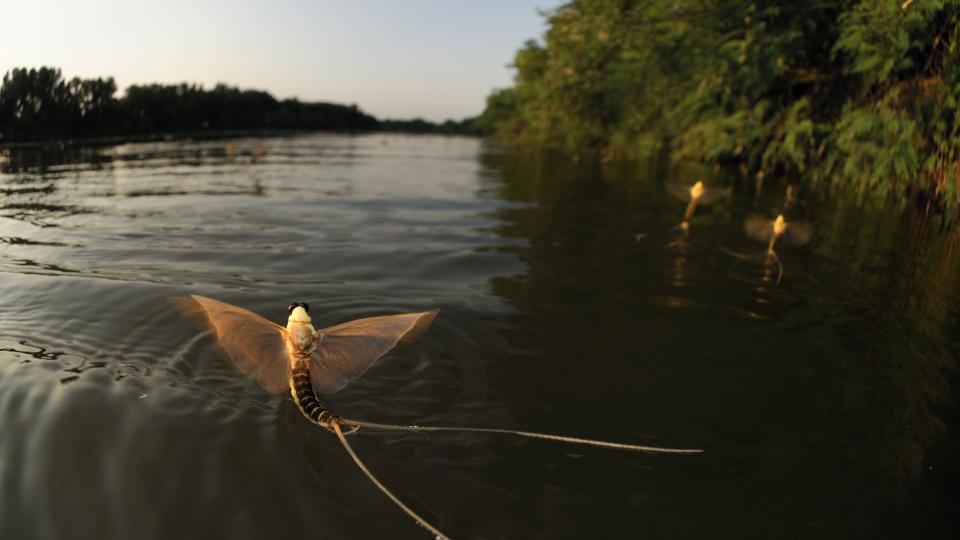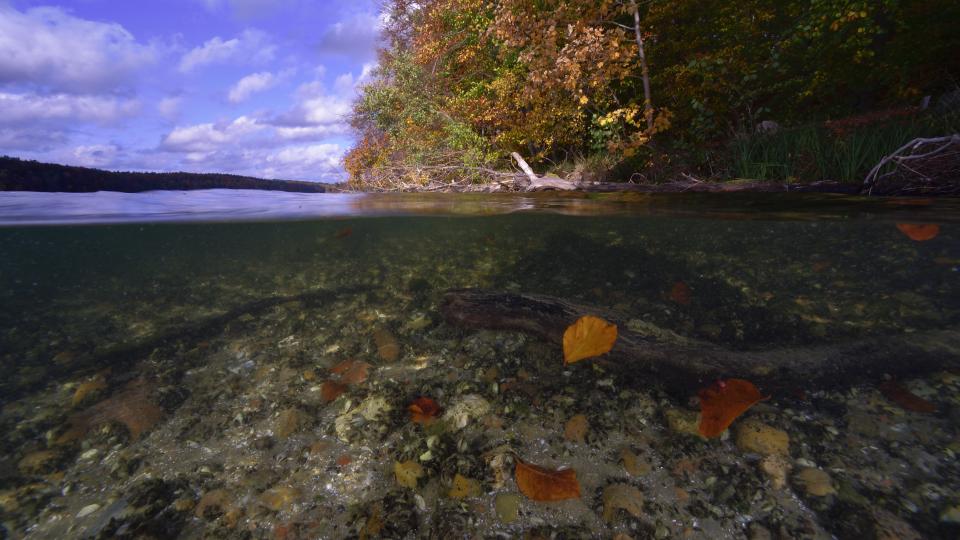
Search image with caddisfly larva | © shutterstock_1239227623
Mayflies (Ephemeroptera), stoneflies (Plecoptera), caddisflies (Trichoptera) and dragonflies (Odonata) live as larvae in water bodies, i.e. they are semi-aquatic. Together with the purely aquatic insects, these insects make up around 6 percent of all insect species – a significant proportion. They are now being recorded for the first time in a comprehensive database, called the EPTO-database. The period of investigation extends from 1951 to 2021, and a total of over 8.3 million georeferenced records are listed, most of which are publicly accessible to researchers and authorities.
If you monitor them closely, you can foresee ecosystem deterioration
"This new database is an important basis for planning and evaluating restoration measures of aquatic ecosystems. Because insect larvae are bioindicators, i.e. indicator species for water quality. “If you monitor them closely, you can foresee ecosystem deterioration early enough", explained Afroditi Grigoropoulou, scientist at the IGB and lead author of the study.
Dragonfly larvae or caddisfly larvae are indicator species because they react sensitively to a deterioration of their living conditions – and many water bodies are in poor condition. Currently, 33 per cent of known EPTO species are considered threatened according to the IUCN Red List, and the extinction rate – species that have not been traced in the last 50 years – is 9 per cent. "The new EPTO database makes it possible to map the occurrence and species composition. This could help to better protect these insects in the future", said IGB researcher Sami Domisch, who led the study.
His team developed the Hydrography90m dataset, which serves as the basis for the database. This is a high-resolution stream network model that depicts even small and tiny streams. In this way, the species could be spatially precisely assigned. But the database is far from finished: "We invite researchers to contribute to the database, especially with insect occurrences from under-sampled areas which we highlight in our global maps. Of course, other researchers are invited to use the data" said Afroditi Grigoropoulou.
Fascinating facts: rash lower lip in dragonfly larvae, upcycling in caddisfly larvae
These insect larvae live almost unnoticed in the water, which is another reason why the authors feel it is important to draw attention to them. Their habits are fascinating. We have already mentioned that the mayfly could actually be called "annual fly-in-water". The larval development of stoneflies in water also lasts much longer than the adult stage on land – even up to several years. During this time, they moult about 10 to 25 times.
Dragonfly larvae, like the winged adults, also feed predatorily. They have catching masks, a special formation of the lower jaw – unique in the animal world. Within 0.2 seconds, the catching mask springs forward, snatches at the prey with two movable front teeth and springs back.
Actually, caddisflies look rather inconspicuous. Their larvae, on the other hand, are very individual. This is because many of them build a caddis as a dwelling with the help of small particles they find. Only the head and legs protrude from this living tube. When the larva grows, new material is simply added to the front end. Some species use nets to catch, which they spin from their secretions and lay out across the current to filter food out of the water.
The global EPTO database: worldwide occurrences of aquatic insects

Iridescent dragonflies are among the most beautiful insects. They spend a long time unnoticed as larvae in the water. | © Solvin Zankl

Mayflies only live on land for a very short time; they spend most of their life as larvae in the water. | © Solvin Zankl

Between water and land, in the riparian zone, many insects spend their lives. | © Solvin Zankl







